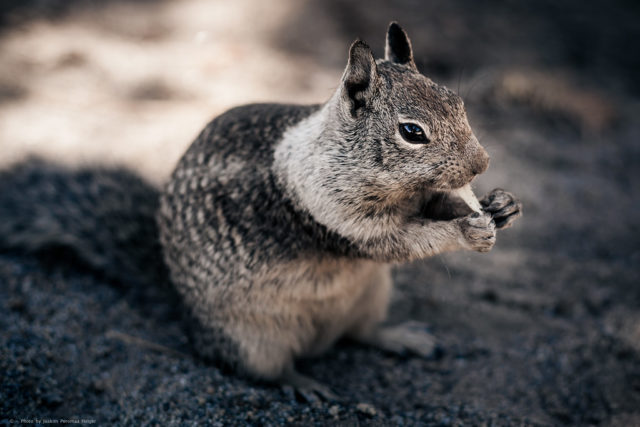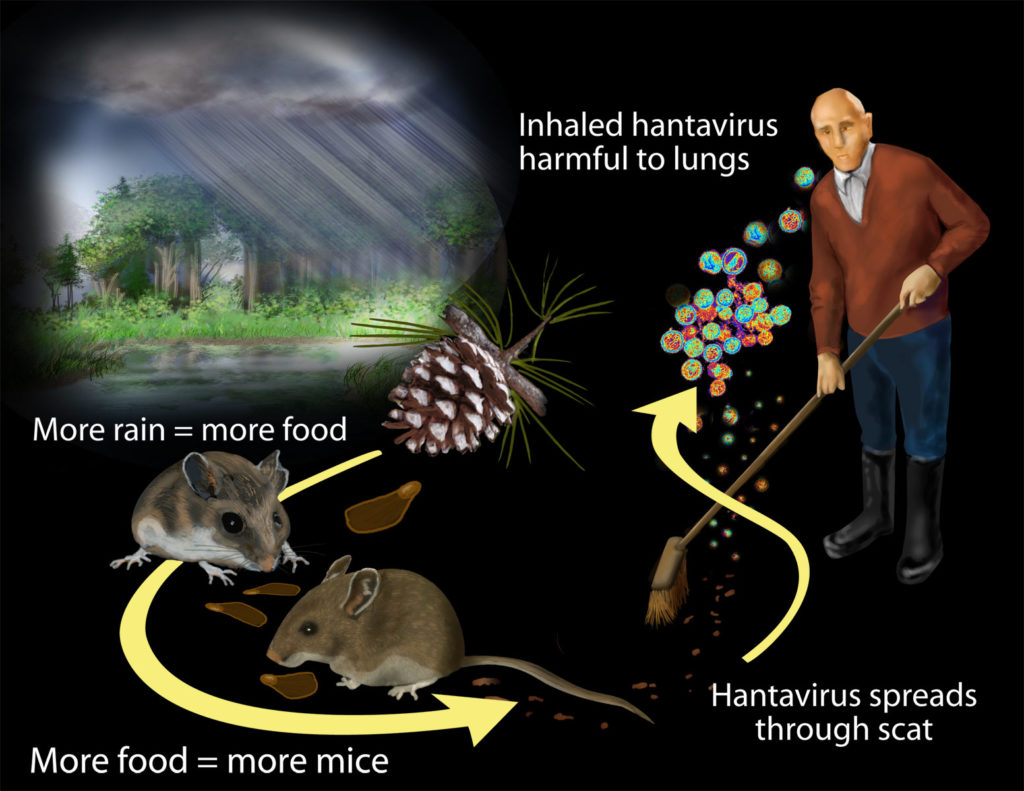2020 really is a challenging year for mankind. When the entire world is still fighting the deadly Coronavirus, there emerges a new challenge, the Hantavirus. Let us know what exactly the Hantavirus is and the disease it causes. Furthermore, we’ll also learn about the symptoms, transmission modes and how this can be prevented.
Table of Contents
What is Hantavirus?
To begin with, just like the Coronavirus, the Hantavirus is also a family of viruses. To be more specific, they belong to the Bunyaviridae family of viruses. These viruses are generally hosted by infected rodents, insectivores and bats. Each Hantavirus appears to have a specific rodent host.
These viruses, specific to geographical locations and hosted by some specific species of rodents are found in Europe, Asia and America.
Types of Hantavirus
As of today, there are two kinds of Hantaviruses found that cause or have caused diseases in Human Beings. Below is a list of the viruses, their carriers, and their geographical locations.

Diseases caused by the Hantavirus
The Hantavirus came into light recently with the death of a man in China.
A person from Yunnan Province died while on his way back to Shandong Province for work on a chartered bus on Monday. He was tested positive for hantavirus. Other 32 people on bus were tested.
@globaltimesnews
However, the Hantavirus has been present longer than we know. Spread by a wide species of rodents, each virus has a preferred carrier. The diseases are:
Hemorrhagic Fever with Renal Syndrome (HFRS)
This is one of the diseases caused by the Hantavirus respectively. The specific viruses that are known to cause this include:
- Dobrava Belgrade Viruses
- Saaremaa
- Puumala
- Hantaan
- Amur/ Soochong
- Seoul
- Tula
This disease includes the Korean hemorrhagic fever, epidemic hemorrhagic fever, and nephropathia epidemica.
These viruses are found in Europe and Asia and the diseases are generally limited to those continents. For detailed geographical locations, refer to the image above.
Transmission
In general, these viruses are carried by rodents. Viruses can be transmitted in the following ways:
- Inhaling aerosolized urine or faeces of infected rats. Coming in contact with the saliva of infected rats or dust from their burrow.
- Secondly, transmission in humans can also occur through broken skin (such as cuts) or through mucous membranes (such as eyes, nose or mouth) when humans come in contact with the saliva, urine, faeces of infected rodents.
- Bites from the infected rodents are also a mode of transmission of the virus.
Man to man transmission of the virus is extremely rare.
Symptoms
According to the CDC, the symptoms of the Hemorrhagic Fever with Renal Syndrome (HFRS) are most likely to occur within 1-2 weeks after exposure to the virus or infectious material. In some rare cases, symptoms might take 8 weeks to develop.
Early Symptoms
- Severe, intense headaches
- Abdominal and back pain
- Fever and chills
- Nausea
- Blurred Vision
In some cases, rashes, flushing of the eyes and the redness and inflammation of eyes might occur.
Severe Symptoms
- Acute Kidney Failure
- Acute Shock
- Vascular Leakage
- Low Blood Pressure
Death in patients with HFRS ranges from 1-15%. Fatality depends upon the causative virus in this case. For Haantan virus, fatality ranges from 5-15% while for the Puumala virus; it is less than 1%.
Hantavirus Cardiopulmonary Syndrome (HCPS)
The HCPS or HPS (Hantavirus Pulmonary Syndrome) is another respiratory disease caused by this family of viruses. The specific viruses that cause the HCPS are:
- Andes
- Oran
- Bermejo
- Lechiguanas
- Rio Mamore
- Choclo
- Laguna Negra
- Araraquara
- Juquitiba
- Bayou
- Black Creek Canal
- Sin Nombre
- New York
This disease is prevalent in the states of North and South America.
Transmission
As mentioned earlier, the disease is carried by rodents. The modes of transmission to humans are as follows:
- Through bites of infected rodents. This mode of transmission is very rare as stated by the CDC.
- Through mucous membranes such as mouth, eyes and nose. The virus is spread on touching the mouth, eyes or nose after touching rodent saliva, faeces or urine.
- Eating foods contaminated by rodent droppings, saliva or urine.
Man to man transmission has not been reported till date. However, in Chile and Argentina, man to man transmission was found due to close contact with the patient. The disease was caused by the Andes virus.
Symptoms
The symptoms can be divided into two categories. They are:
Early Symptoms
The early symptoms that occur when an individual is infected with the disease are:
- Fever
- Fatigue
- Muscle aches in thigh, back, hips and shoulders.
Severe Symptoms
The severe or the late symptoms generally appear after 6-10 days of infection. The symptoms are:
- Coughing
- Shortness of breath
As the lungs fill with fluid, these symptoms become dangerous leading to more severe conditions.
According to the CDC, HPS is fatal. It has a mortality rate of 50%.
Now, let us answer some of the general queries related to the Hantavirus.
Hantavirus Transmission | How is Hantavirus transmitted?
Hantavirus transmission occurs through infected rodents. The infection is spread when people come in contact with infected rodent droppings, urine and saliva.
Infection can also occur when infected and contaminated material enters through cuts in the skin and by mucous membranes (nose, mouth and eyes).
In some cases, bites from infected rodents can also cause the infection. Inhaling aerosolized urine, dust from burrows and dried droppings are also known to spread the infection.

What are the first symptoms of Hantavirus?
The early symptoms of the Hantavirus disease (HPS) include fatigue or tiredness, fever and muscle aches (in thighs, hips, back and shoulders).
The severe symptoms include coughing and shortness of breath. In the advanced stages, these symptoms can be too severe.
Is the Hantavirus curable?
Till date Hantavirus has no vaccine or cure. However, if patients are brought at an early stage, supportive treatment, Intensive Care Units (ICU) including Intubation and Oxygen therapy can cure the disease.
However, in the late stages, chances of recovery or response to treatment are very little.

Hantavirus Prevention
The methods of prevention of Hantavirus are as follows:
- Rat control and proper cleaning of residence and establishments to get rid of rodents.
- Using masks and gloves when in contact with infected rodents.
- Avoiding contaminated foods. Foods that have been contaminated by rat droppings, urine and saliva.
- Trying to avoid raising dust while sweeping dried rodent droppings as inhaling the dust can cause the infection.
- Trying to avoid inhaling aerosolized rodent urine and dust from dried faeces and rodent nests.
- Covering wounds and cuts in the skin when in contact with infected rodents.
- Washing hands properly before touching eyes, nose and mouth and after coming in contact with rodents.
These are some of the ways to prevent the transmission of the infection.
Hantavirus Treatment
Till date Hantavirus has no vaccine or cure. However, if patients are brought at an early stage, supportive treatment that includes Fluid replacement, medications and Oxygen therapy is provided.
Moreover, patients are kept in Intensive Care Units (ICU) and provided Intubation and Oxygen Therapy.
However, in the late stages, chances of recovery or response to treatment are very little.
How long does it take to show signs of Hantavirus?
In general, early signs of Hantavirus such as fever, fatigue and aches occur within 1-2 weeks. In some cases, these signs might take about 8 weeks to show up.
Conclusion
This was all the information that you needed to know about the Hantavirus, its symptoms, modes of transmission and prevention. However, the best way to prevent diseases and lead a healthy life is to maintain proper hygiene, clean surroundings and be conscious.
References:
Indian Journal of Medical Microbiology
Hantaviruses by Mohammed A. Mir, PhD










Leave a Reply